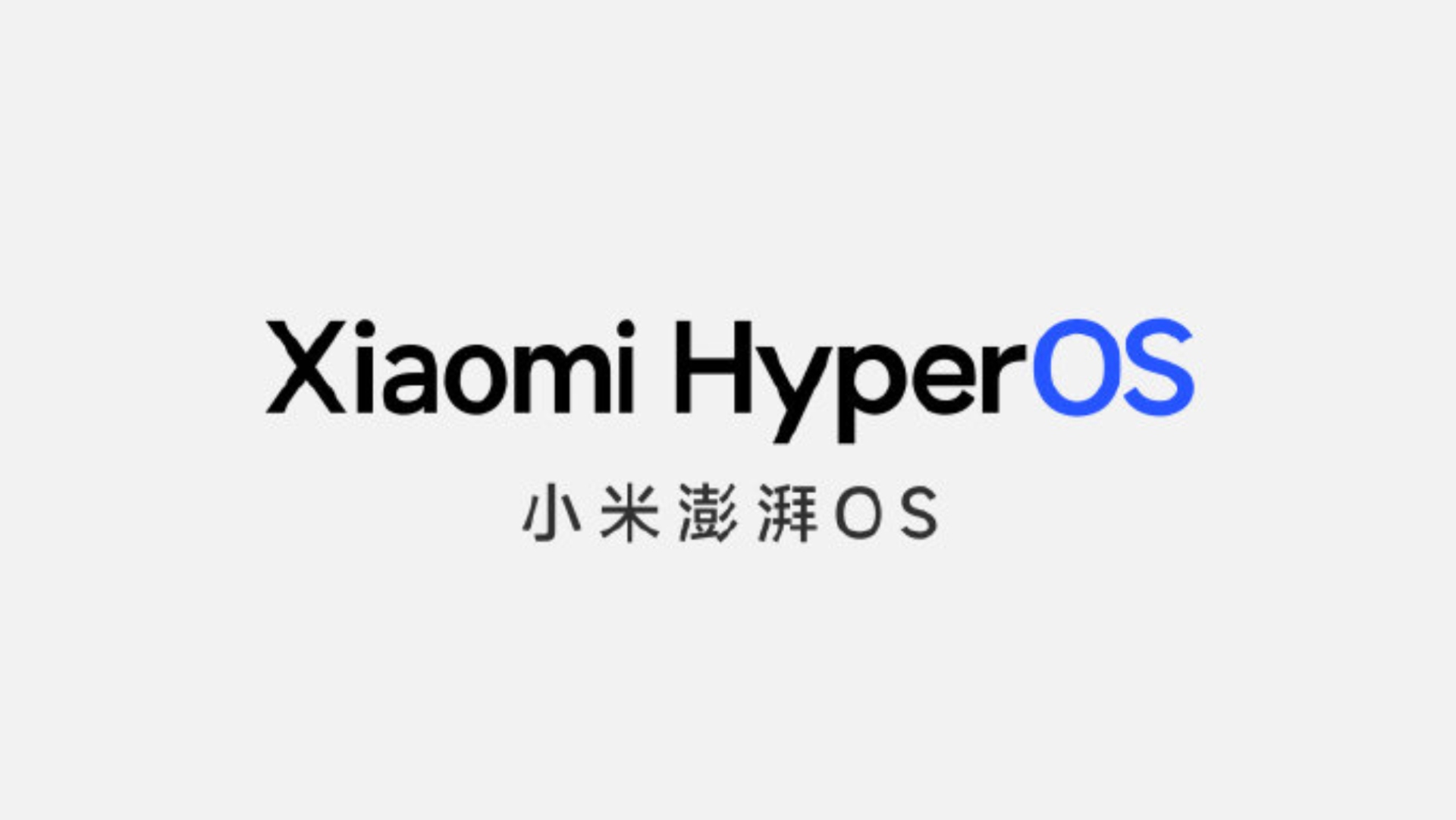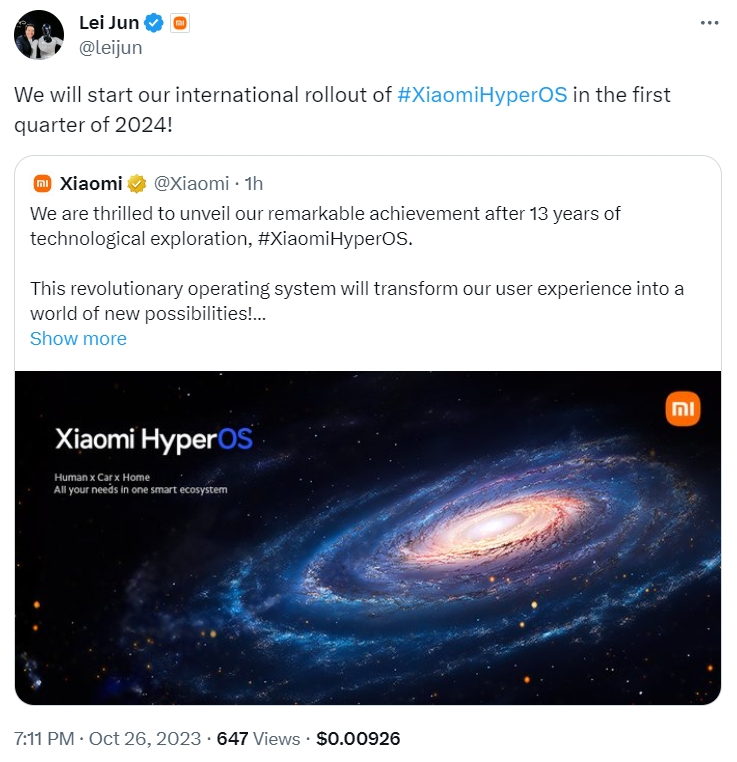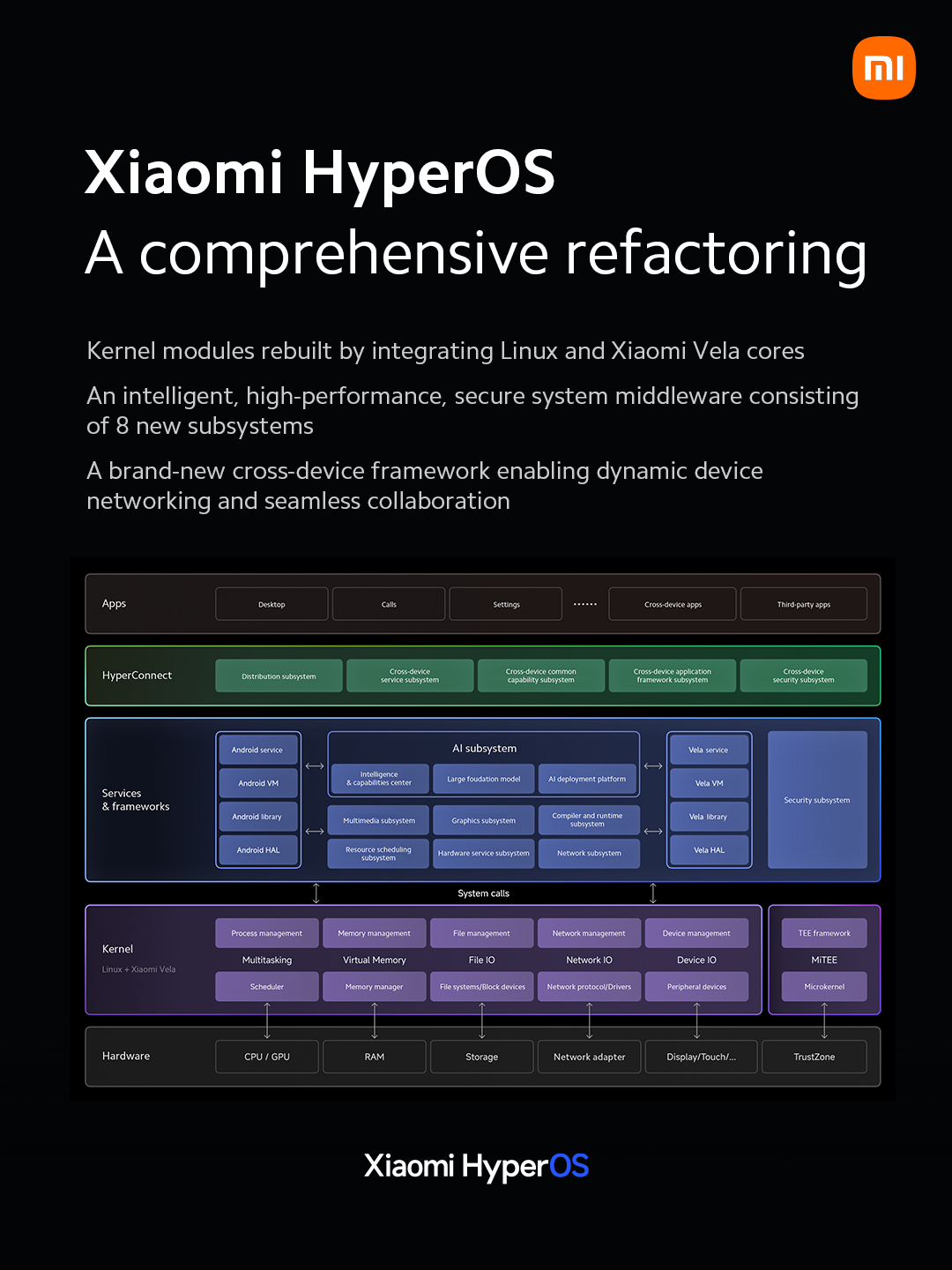Affiliate links on Android Authority may earn us a commission. Learn more.
Xiaomi's HyperOS brings its entire ecosystem experience under one branding

- Xiaomi has provided more details of its HyperOS operating system.
- HyperOS is based on AOSP for mobile devices, while it is based on the open-source Xiaomi Vela platform for IoT devices.
- HyperOS begins rolling out internationally in Q1 2024.
Xiaomi has just launched the new Xiaomi 14 and Xiaomi 14 Pro in China and also revealed a few key details about its new HyperOS. This new operating system will gradually replace Xiaomi’s legacy MIUI operating system on Android smartphones, which has been around for 13 years.
HyperOS is a larger unified branding that encompasses Xiaomi’s operating system(s) across its entire ecosystem, ranging from smartphones to smart home products to even cars in the future. As such, Xiaomi HyperOS is pre-installed on the new Xiaomi 14 series, Xiaomi Watch S3, Xiaomi TV S Pro 85-inch MiniLED TV, and other devices.
But can a single OS deliver on the diverse functionality expectations across such a broad portfolio of products? It can if it isn’t actually a single OS but an umbrella branding to denote the ecosystem experience from the OEM at large.
For IoT products, HyperOS relies on the open-source Xiaomi Vela platform, which in turn is based on the open-source RTOS, NuttX, while for smartphones and tablets, HyperOS is based on AOSP.
As such, Android app compatibility will remain healthy on your smartphone. Your base Android version is also independent of the HyperOS version. For example, the Xiaomi 14 and Xiaomi 14 Pro ship with HyperOS v1 based on Android 14, while the Xiaomi Pad 5 will be updated to HyperOS v1 based on Android 13.
If that sounds very similar to MIUI, that is because it is. From whatever we have seen so far, HyperOS on Xiaomi smartphones can be better described as an evolution over the MIUI 14 experience. The UX has changed in some places, like the new lockscreen customizations, but retains the distinct MIUI flavor as seen in several system apps.
Xiaomi says HyperOS is a naturally lightweight OS, coming in at 8.75GB for smartphones. On devices with limited processing power, HyperOS is boasting of scheduling changes to maximize hardware performance. The company also claims that HyperOS allows for a stable frame rate and lower power consumption compared to stock Android when gaming.
Xiaomi also mentions extensive restructuring of technical modules such as the file system, memory management, imaging subsystem, and network system. However, the company’s press release fails to explain the technical details of how different it is from AOSP and the outgoing MIUI firmware.
Where Xiaomi’s HyperOS appears to show innovation is the HyperConnect framework that will be present across devices. Through HyperConnect, Xiaomi aims to bring all its devices together for a cohesive ecosystem experience. It will be interesting to see how experiences enabled through HyperConnect would co-exist globally alongside other connected initiatives such as Snapdragon Seamless.
Xiaomi is also promising AI use cases and improvements, but once again, it is difficult to understand its messaging split across ecosystem products and the smartphone-centric experience. From what we could gather, you can expect to see AI functions in the AOSP-based HyperOS on smartphones, such as the HyperOS Gallery app getting generative AI capabilities to “expand” existing images.
HyperOS rollout for Xiaomi smartphones

Xiaomi CEO Mr. Lei Jun states that Xiaomi HyperOS will begin rollout internationally in Q1 2024. The post does not specify the product platform on which the first HyperOS updates would arrive globally.
HyperOS is too wide and confusing and doesn’t really fix MIUI
I find Xiaomi’s messaging on HyperOS confusing as the company insists on clubbing two (and more) different sets of experiences (smartphones vs IoT) under the same branding. The conversation would have been easier to follow if Xiaomi had chosen to classify HyperOS into “HyperOS IoT” and “HyperOS Mobile” sub-classes.
Further, nothing indicates that HyperOS on mobile brings the improvements we wished for. Some common complaints on MIUI (as of MIUI 14) were the slower updates and aggressive battery optimizations, and the announcements so far have not addressed them specifically. It is also difficult to judge if all the standard changes that are part of the Android platform, such as Android 14, are available on HyperOS. Hopefully, we can judge these aspects better once the stable update begins rolling out globally.


